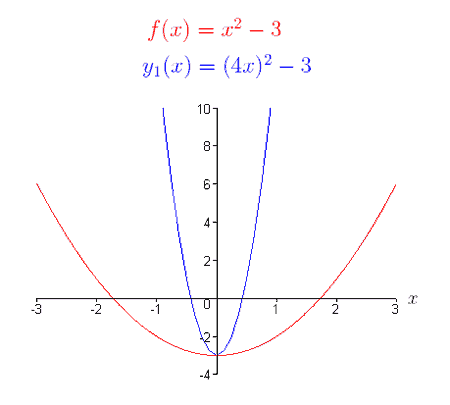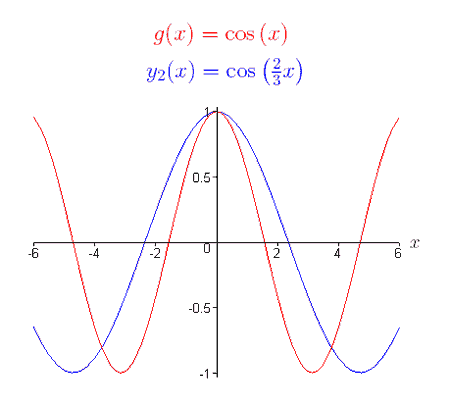Transformations of Graphs
Horizontal Stretches and Shrinks
|
What are Horizontal Stretches and Shrinks? Horizontal stretches and shrinks, respectively, horizontally pull the base graph, or push it together, while leaving the y-intercept unchanged to anchor the graph.
A horizontal stretch or shrink by a factor of 1/k means that the point (x, y) on the graph of f(x) is transformed to the point (x/k, y) on the graph of g(x). Examples of Horizontal Stretches and Shrinks Consider the following base functions,
The graphical representation of function (1), f (x), is a parabola. What do you suppose the graph of y1(x) = f (4x) looks like? Using the definition of f (x), we can write y1(x) as, y1(x) = f (4x) = (4x)2 - 3 = 16x2-3. Based on the definition of horizontal shrink, the graph of y1(x) should look like the graph of
Function (2), g (x), is a cosine function. What would the graph of y2(x) = g(2/3x) look like? Using our knowledge of horizontal stretches, the graph of y2(x) should look like the base graph g(x) stretched horizontally by a factor of 3/2. To check this, we can write y2(x) as, y2(x) = g(2/3x) = cos (2/3x), construct a table of values, and plot the graph of the new function. As you can see, the graph of y2(x) is in fact the base graph g(x) stretched horizontally by a factor of 3/2.
***** In the next section, we will explore reflections. |
The Biology Project > Biomath > Transformations > Horizontal Stretches and Shrinks
Department of Biochemistry and Molecular Biophysics
The University of Arizona
January 2006
Contact the Development Team
http://www.biology.arizona.edu
All contents copyright © 2006. All rights reserved.

